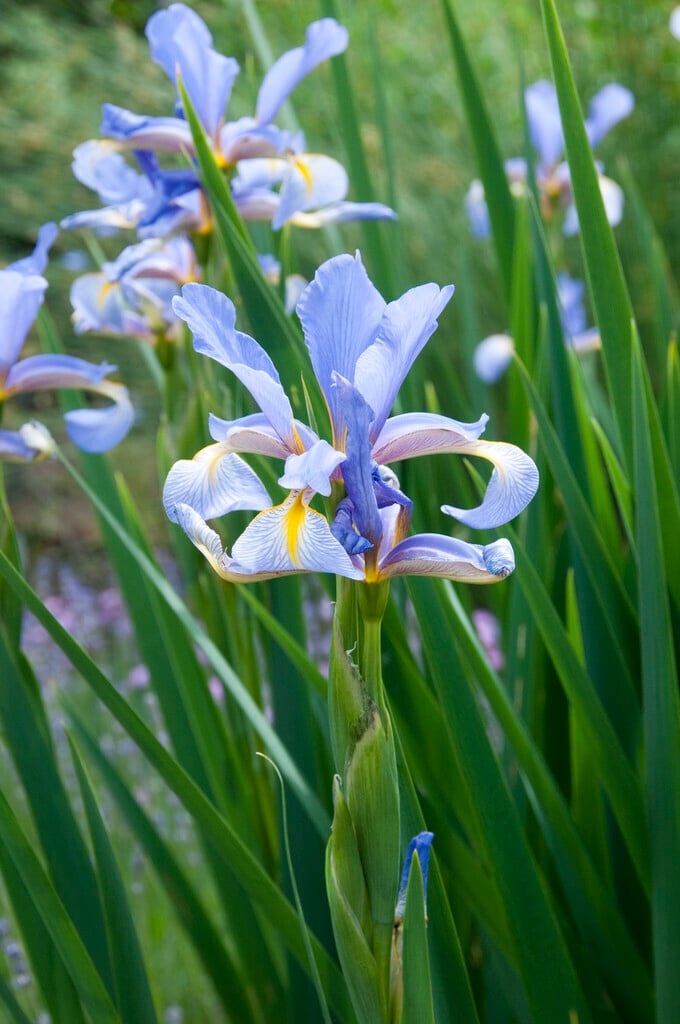Iris spuria subsp. musulmanica
An upright perennial, to around 80cm high, with narrow, sword-shaped grey-green leaves. Branching stems bear up to ten flowers in early summer, in shades from pale to deep purple or occasionally white. Flowers have delicate, narrow petals, with a yellow signal and often have darker purple veining on the falls

Size
Ultimate height
0.5–1 metresTime to ultimate height
2–5 yearsUltimate spread
0.1–0.5 metresGrowing conditions
Moisture
Well–drainedpH
Neutral, AcidColour & scent
| Stem | Flower | Foliage | Fruit | |
| Spring | Green Grey Silver | |||
|---|---|---|---|---|
| Summer | Purple White | Green Grey Silver | ||
| Autumn | ||||
| Winter |
Position
- Full sun
Aspect
South–facing
Exposure
Sheltered Hardiness
H6Botanical details
- Family
- Iridaceae
- Native to GB / Ireland
- No
- Foliage
- Deciduous
- Habit
- Clump forming
- Potentially harmful
- Harmful if eaten. Wear gloves and other protective equipment when handling. Pets: Harmful if eaten. For further information and contact numbers regarding pets, see the HTA guide to potentially harmful plants
- Genus
Iris may be rhizomatous or bulbous perennials, with narrow leaves and erect stems bearing flowers with 3 large spreading or pendent fall petals, alternating with 3 erect, often smaller, standard petals, in late winter, spring or early summer
- Name status
Correct
How to grow
Cultivation
Grow in well-drained, fertile, neutral to slightly acid soil in full sun
Propagation
Propagate by division, see dividing iris for more detailed advice
Suggested planting locations and garden types
- City and courtyard gardens
- Cottage and informal garden
- Flower borders and beds
- Wall side borders
Pruning
Remove spent flower stems and any dying foliage in autumn
Pests
Diseases
May be susceptible to aphid-borne viruses, bacterial soft rot and grey moulds; see Iris diseases
Get involved
The Royal Horticultural Society is the UK’s leading gardening charity. We aim to enrich everyone’s life through plants, and make the UK a greener and more beautiful place.